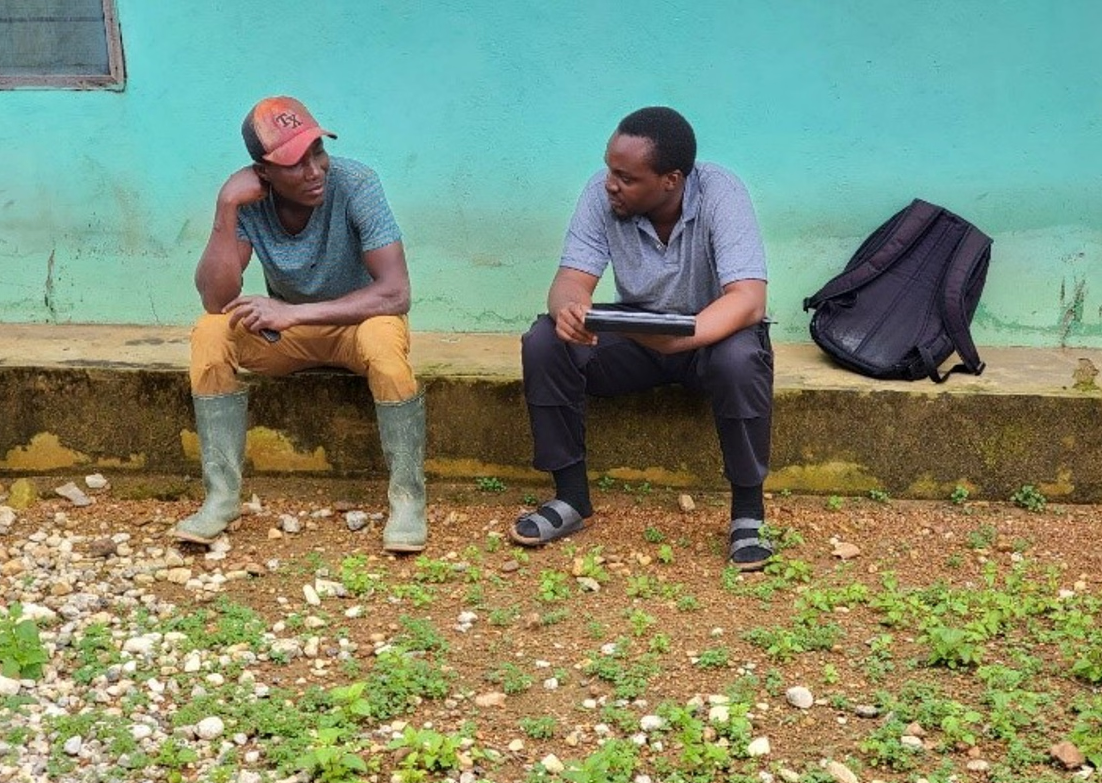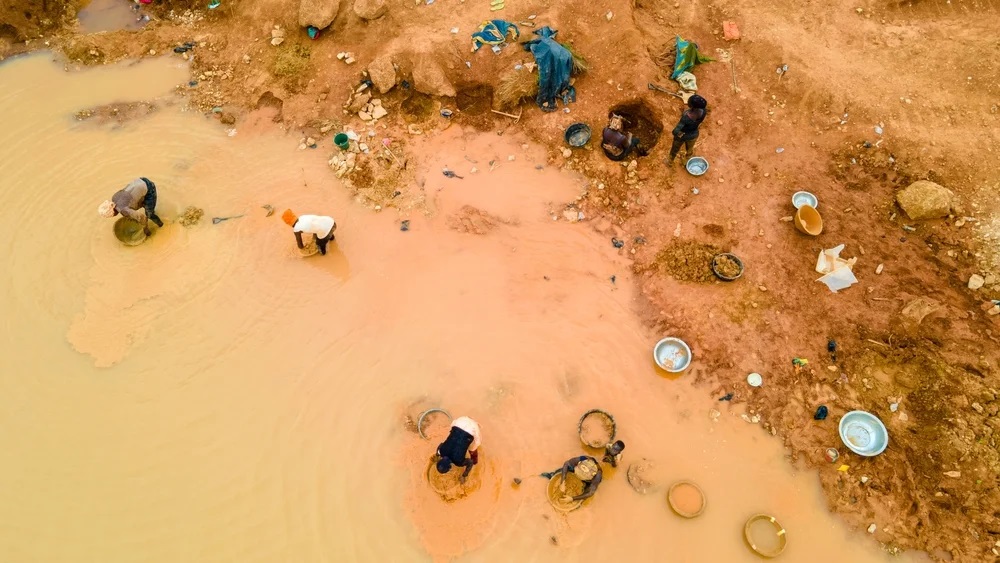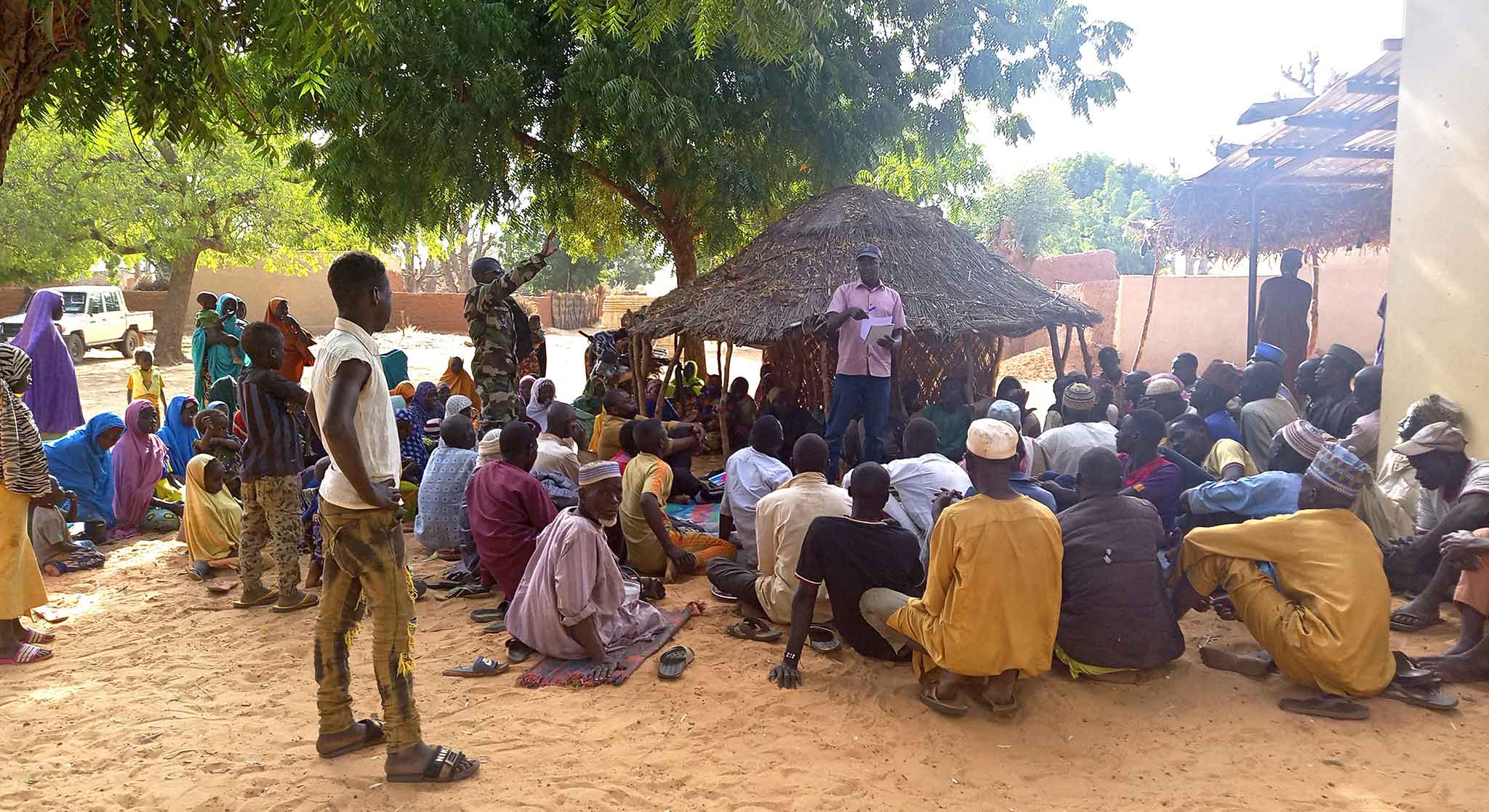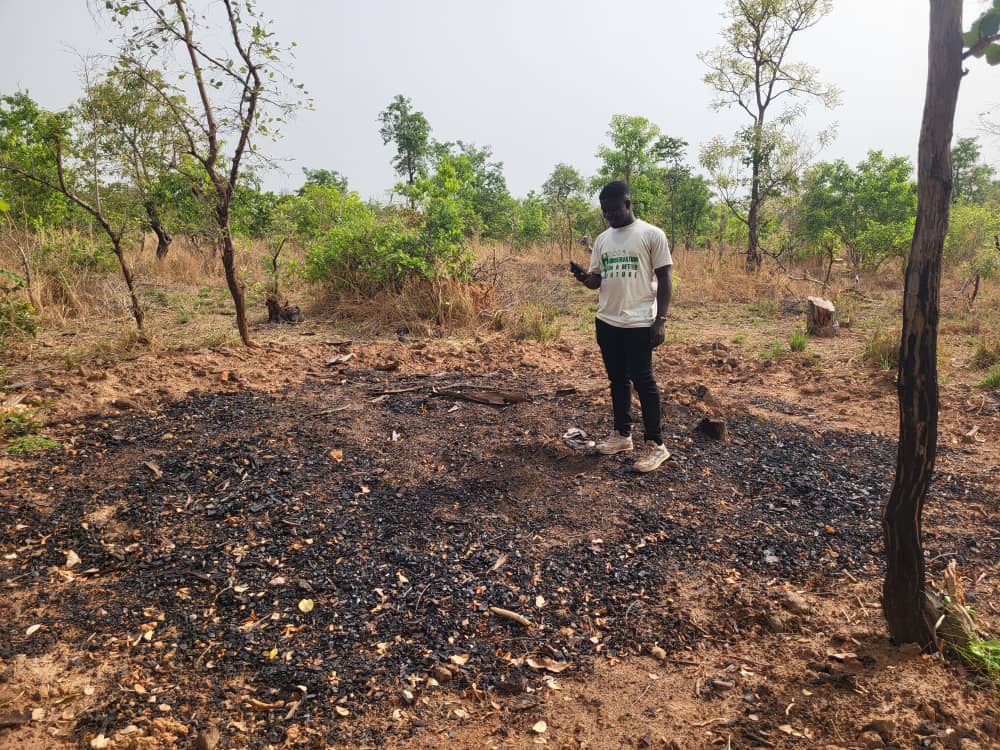SERVIR WA 2 Project Engages Communities on the Environmental and Health Challenges of Unregulated Mining Operations
Artisanal mining is considered a significant livelihood source for many in rural Ghana. However, the increase in unregulated mining activities, commonly referred to as galamsey in the local language, has resulted in severe land degradation, biodiversity loss, pollution of water bodies, and acidification of soils, all of which are harmful to the biophysical and socio-economic environment. The SERVIR West Africa (SERVIR WA) project, funded by USAID, is developing an accurate information system to map the location and scale of these mining sites.
The Monitoring of Artisanal Mining Service, provided by the SERVIR WA 2 program, is implemented in Ghana by the Centre for Remote Sensing and Geographic Information Services (CERSGIS). The monitoring platform provides critical data on the location of illegal mining sites across Ghana and their associated land degradation, supporting decision-makers and partners in their efforts to effectively target areas for remediation and landscape restoration activities.
Since 2016, CERSGIS has employed remote sensing technologies to monitor galamsey activities in Ghana’s high forest zone. Recognizing the need to understand the broader socio-economic context, the center widened its efforts to conduct a comprehensive baseline survey across 15 communities in the Atiwa East, Atiwa West, and Fanteakwa South Districts of Ghana’s Eastern Region. Facilitated by A Rocha Ghana, an environmental conservation NGO with deep community ties, the survey aimed to capture the real impact of small-scale mining from the perspectives of those who experience it daily.
Socio-Economic Impact
This community engagement in Ghana’s Eastern region stands out for its surveyors’ approach to assessing the socio-economic impact of small-scale mining through the lens of both miners and their communities. The study highlights both the positive and negative effects on these communities and concludes with solutions proposed by local stakeholders.
The findings reveal that galamsey is a cornerstone of the local economy, providing employment and economic opportunities to thousands. From miners extracting gold to those involved in its trade and ancillary services, the activity serves as a vital lifeline, offering significant economic benefits to communities that have long relied on subsistence farming to combat poverty.
For many, galamsey has enabled access to education, healthcare, and other necessities that would otherwise be unattainable. Miners, like Mr Agyekum Boateng from Akyem Bomaa, share how mining has transformed their lives, providing a steady income for education and healthcare, ultimately lifting families out of poverty. The economic benefits also extend beyond the miners, boosting local businesses and enhancing trade and livelihoods throughout the region.
“Mining has changed our lives, providing us with jobs and the ability to support our families. Before, many of us struggled with farming and other menial work that barely met our needs. Now, we can send our children to school and afford healthcare,” said Mr Boateng.
Mrs Mary Asante Konadu, a former miner who has become a shopkeeper in Pameng, underscores how businesses funded by galamsey are flourishing and contributing to the community’s prosperity.
“I used the money I earned from galamsey to start this shop, and it is thriving thanks to the steady flow of income from mining,” asserted Mrs Konady.
Environmental Impact
While galamsey brings economic benefits, it also poses serious environmental and social challenges. The Birim River, once clear and essential for local domestic use, has become murky and lifeless. Fertile lands have been scarred by excavation, and toxic chemicals from mining have contaminated water sources. Extensive deforestation for mining exacerbates climate change, disrupts ecosystems, and reduces natural services like water purification and carbon sequestration.
In communities such as Akyem Mampong and the Atiwa East District, the degradation of land and water sources threatens food security and exacerbates poverty. In these areas, the impact of mining is so severe that chiefs, elders, and community members have lamented the loss of nearly all their agricultural land.
Mr Nana Ansah Sasraku Ofram II, a leader of the Akyem Ankaase community, calls for responsible mining practices and greater community involvement in decision-making.
“The destruction of these lands threatens food security and drives up food prices, worsening poverty as families lose their primary means of subsistence. What was once fertile farmland is now barren and contaminated, dealing a severe blow to the community that depends on farming for food and income,” said Mr. Ofram.
“These issues stem from policy failures and inadequate regulation of the small-scale mining sector. Local authorities and residents are excluded from the concession process and lack the power to oversee or control mining activities. This absence of oversight has led some companies to operate irresponsibly, resulting in significant environmental damage,” he added.
Chiefs and elders across communities share concern for greater local involvement in decision-making processes. Miners themselves recognize the environmental impact of galamsey and advocate for formalization and regulation to balance economic benefits with sustainability. However, while most miners are aware of the damage caused, they believe that an outright ban is not the solution.
Instead, they call for responsible mining practices, formalization of the sector, and proper oversight to reduce environmental harm while maintaining economic advantages.
A significant number of miners are committed to mining responsibly and preserving their land for future generations. The consensus is that with appropriate support and regulations, miners can achieve economic benefits without causing irreversible environmental damage.

Facilitator from environmental conservation NGO, A Rocha Ghana, interviews a miner in Ghana. Photo. CERSGIS
Impact on Health and Well-being
Miners also expressed deep concerns about their health and safety at mining sites. The physically demanding nature of mining, often conducted under harsh conditions with inadequate protective gear, leads to frequent severe headaches and body pains. The risk of injury or death from accidents involving heavy machinery, collapsing pits, and exposure to hazardous chemicals exacerbates these health issues.
Mining sites also face high levels of violence and drug abuse, driven by the stress of the environment and the transient workforce. Drug abuse often becomes a coping mechanism, further undermining the community’s social fabric and threatening the well-being of miners and their families.
Additionally, miners are frequently exploited by their superiors and site managers, receiving only a fraction of the gold’s true value while the bulk of profits are siphoned off by those higher up. This exploitation is facilitated by opaque market practices and unethical gold dealers, leaving miners vulnerable due to their lack of bargaining power and financial literacy.
Gender disparities also exacerbate socio-economic challenges in illegal mining. Children, lured by the promise of quick money, often frequent mining sites, leading to increased school dropout rates and rising illiteracy levels. While some mining families use the income to educate their children, others are forced to abandon school for immediate financial gain, further entrenching their poverty.
The study concluded that addressing these complex issues requires comprehensive policies that protect both miners’ livelihoods and environmental integrity, ensuring sustainable development for affected communities.

Interview of a female artisanal miner, conducted during the Artisanal Small-Scale Gold Mining socio-economic survey in Akyem Banso, located in the Atiwa West district of the Eastern Region, Ghana. Photo. CERSGIS
About the SERVIR-West Africa Program: Funded by the United States Agency for International Development (USAID), the SERVIR-West Africa (SERVIR-WA) Program is a part of the Global SERVIR initiative, which is a joint initiative of USAID and the National Aeronautics and Space Administration (NASA), and leading geospatial organizations in Asia, Africa, and Latin America, that partners with countries and organizations in these regions to address critical challenges in climate change, food security, water and related disasters, land use, and air quality.
The SERVIR WA program aims to leverage Earth Observation data and geospatial tools for development in West Africa. This work on artisanal mining (Galamsey) is a service implemented by the Centre for Remote Sensing and Geographic Information Services (CERSGIS), a member of the SERVIR-West Africa Consortium in Ghana.
This article is made possible by the generous support of the American people through the USAID and NASA. SERVIR WA 2 is responsible for its contents, which do not necessarily reflect the views of USAID, NASA, or the United States Government.







